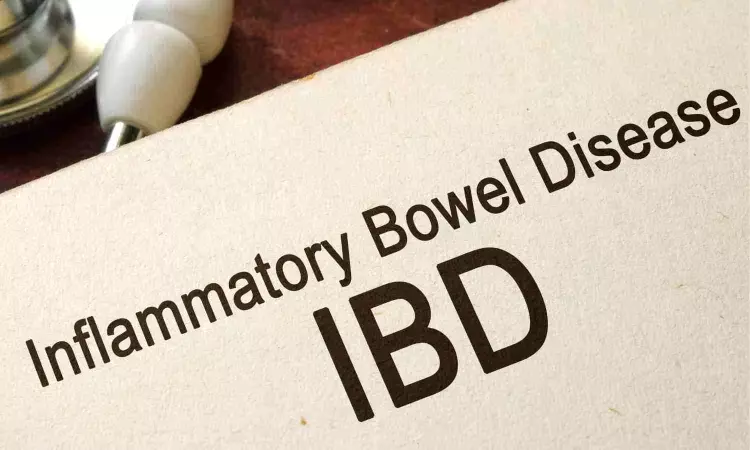- Home
- Medical news & Guidelines
- Anesthesiology
- Cardiology and CTVS
- Critical Care
- Dentistry
- Dermatology
- Diabetes and Endocrinology
- ENT
- Gastroenterology
- Medicine
- Nephrology
- Neurology
- Obstretics-Gynaecology
- Oncology
- Ophthalmology
- Orthopaedics
- Pediatrics-Neonatology
- Psychiatry
- Pulmonology
- Radiology
- Surgery
- Urology
- Laboratory Medicine
- Diet
- Nursing
- Paramedical
- Physiotherapy
- Health news
- Fact Check
- Bone Health Fact Check
- Brain Health Fact Check
- Cancer Related Fact Check
- Child Care Fact Check
- Dental and oral health fact check
- Diabetes and metabolic health fact check
- Diet and Nutrition Fact Check
- Eye and ENT Care Fact Check
- Fitness fact check
- Gut health fact check
- Heart health fact check
- Kidney health fact check
- Medical education fact check
- Men's health fact check
- Respiratory fact check
- Skin and hair care fact check
- Vaccine and Immunization fact check
- Women's health fact check
- AYUSH
- State News
- Andaman and Nicobar Islands
- Andhra Pradesh
- Arunachal Pradesh
- Assam
- Bihar
- Chandigarh
- Chattisgarh
- Dadra and Nagar Haveli
- Daman and Diu
- Delhi
- Goa
- Gujarat
- Haryana
- Himachal Pradesh
- Jammu & Kashmir
- Jharkhand
- Karnataka
- Kerala
- Ladakh
- Lakshadweep
- Madhya Pradesh
- Maharashtra
- Manipur
- Meghalaya
- Mizoram
- Nagaland
- Odisha
- Puducherry
- Punjab
- Rajasthan
- Sikkim
- Tamil Nadu
- Telangana
- Tripura
- Uttar Pradesh
- Uttrakhand
- West Bengal
- Medical Education
- Industry
Novel PET imaging tool identifies early signs of IBD and predicts response to treatment, suggests study

A newly developed imaging method, granzyme B PET, can non-invasively detect inflammatory bowel disease (IBD) and provide a real-time picture of active inflammation in the tissue, according to new research published in the July issue of The Journal of Nuclear Medicine. Information garnered from the PET images can be used to monitor IBD treatment efficacy and could potentially guide more personalized patient management strategies in the future.
IBD is a chronic gastrointestinal inflammatory disorder and includes two major groups: Crohn’s disease and ulcerative colitis. Although there have been notable advancements in the clinical management of IBD, substantial challenges remain in enhancing diagnostic precision, overcoming issues with treatment intolerance, and addressing the recurrent cycle of remission and relapse. In addition, long-standing IBD is associated with an increased risk of cancer, which necessitates constant monitoring of disease activity.
“Currently, there is no accurate method to detect and differentiate active inflammation from chronic disease. MRI and CT look at the structural changes in the bowel, while other imaging techniques look at the increased number of immune cells in the
tissue. None of the tools, however, capture the dynamic nature of immune responses in the colon,” said Pedram Heidari, MD, radiologist and service chief of nuclear medicine at Massachusetts General Hospital, Harvard Medical School, in Boston, Massachusetts. “A non-invasive imaging method to detect immune system activation with high resolution is key to improving IBD management.”
In the study, Heidari and colleagues assessed the potential of the granzyme B gene as a biomarker for detecting IBD and predicting treatment response. Human tissue samples of Crohn’s disease and ulcerative colitis (both active and inactive disease), as well as of the noninflamed bowel, were stained to measure the expression of granzyme B. Compared to noninflamed bowel tissue, granzyme B was upregulated significantly in diseased tissues, with active disease recording higher levels of granzyme B than inactive disease. Tissue samples from IBD treatment responders and non-responders were also measured, and lower granzyme B expression was found in the responders than the non-responders.
Next, the researchers evaluated changes in granzyme B expression in a murine model including colitis-induced and control mice. Mice were imaged with 68Ga-NOTA-GZP PET at one, three, and four weeks. PET imaging showed significantly increased bowel uptake of 68Ga-NOTA-GZP in mice induced with colitis versus control mice. After treatment, 68Ga-NOTA-GZP uptake in colitis-induced mice decreased, however, the uptake in colitis-induced mice remained significantly higher than the control at all times.
“Granzyme B PET can help with the timely detection of the active disease, determination of the need to start treatment, and monitoring the response to treatment to ensure the resolution of the inflammation. This is particularly important for monitoring inflammation in the parts of the bowel that are not accessible for endoscopy and tissue sampling,” stated Heidari. “This is a unique tool that can significantly change the trajectory of disease by closely monitoring treatment efficacy and is the true definition of precision medicine.”
Reference:
Pedram Heidari, Arvin Haj-Mirzaian, Suma Prabhu, Bahar Ataeinia, Shadi A. Esfahani and Umar Mahmood, Granzyme B PET Imaging for Assessment of Disease Activity in Inflammatory Bowel Disease, Journal of Nuclear Medicine, DOI: https://doi.org/10.2967/jnumed.123.267344.
Dr Kamal Kant Kohli-MBBS, DTCD- a chest specialist with more than 30 years of practice and a flair for writing clinical articles, Dr Kamal Kant Kohli joined Medical Dialogues as a Chief Editor of Medical News. Besides writing articles, as an editor, he proofreads and verifies all the medical content published on Medical Dialogues including those coming from journals, studies,medical conferences,guidelines etc. Email: drkohli@medicaldialogues.in. Contact no. 011-43720751


